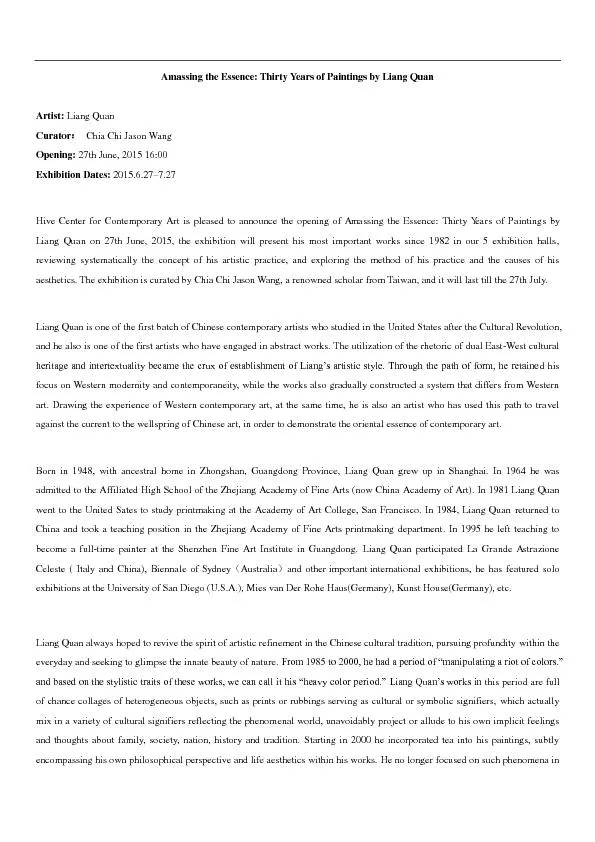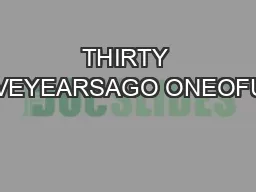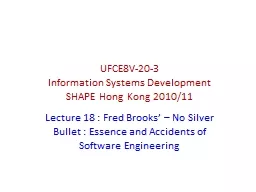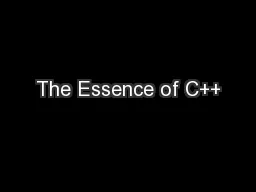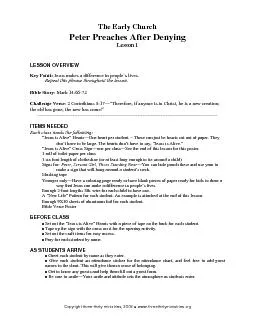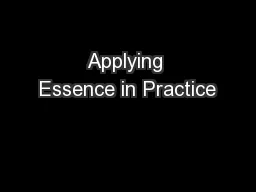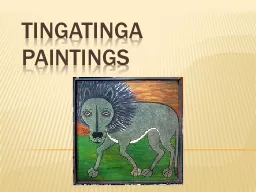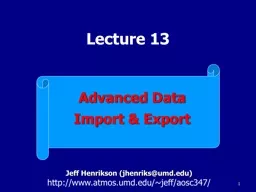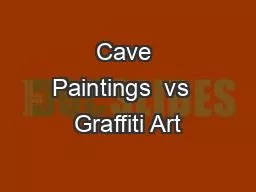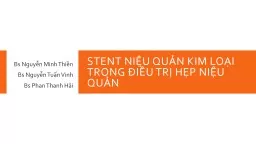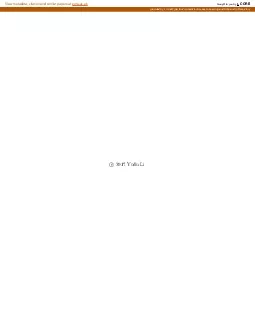PDF-Amassing the Essence: Thirty Years of Paintings by Liang Quan
Author : conchita-marotz | Published Date : 2016-05-09
Artist Liang Quan Curator xFF1A Chia Chi Jason Wang Opening 27th June 2015 1600 Exhibition Dates 2015627 x2013 727 Hive Center for Contemporary Art is pleased to
Presentation Embed Code
Download Presentation
Download Presentation The PPT/PDF document "Amassing the Essence: Thirty Years of Pa..." is the property of its rightful owner. Permission is granted to download and print the materials on this website for personal, non-commercial use only, and to display it on your personal computer provided you do not modify the materials and that you retain all copyright notices contained in the materials. By downloading content from our website, you accept the terms of this agreement.
Amassing the Essence: Thirty Years of Paintings by Liang Quan: Transcript
Download Rules Of Document
"Amassing the Essence: Thirty Years of Paintings by Liang Quan"The content belongs to its owner. You may download and print it for personal use, without modification, and keep all copyright notices. By downloading, you agree to these terms.
Related Documents

